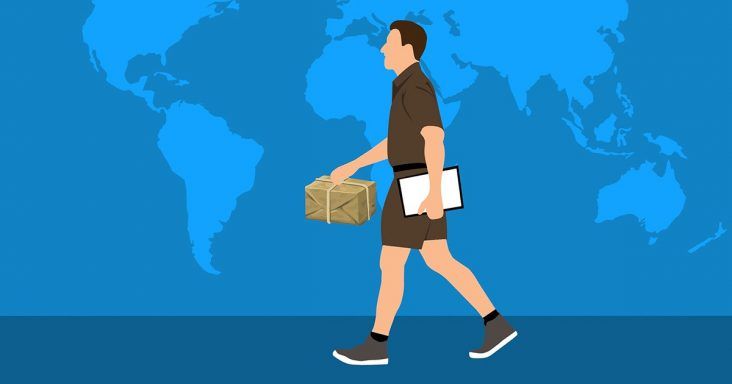Retailer survey highlights final-mile shipping challenges, tech solutions
by February 28, 2023 12:34 pm 880 views

Retailers have been struggling with last-mile, or final-mile, shipping operations as they focus on cost efficiency and technology to resolve issues in 2023, according to a recent survey. Digitization and automation are expected to be significant for retail growth this year.
The 2023 Bringg Barometer, State of Last Mile Delivery, included the results of a survey to provide insights into simplifying last-mile delivery, reducing costs and increasing customer satisfaction. Last-mile delivery platform provider Bringg commissioned a survey of 500 U.S. employees working in supply chain operations, change management and digital roles across the retail and e-commerce sectors.
Following are the key findings of the survey:
- Retailers are focused on cost efficiency in 2023
- Retailers are struggling with a disconnected, complex last mile
- Digitization and automation are key to retail growth in 2023
- Lack of variety and visibility regarding delivery options are affecting online purchases
- Retailers are struggling to manage delivery costs and capacity through carriers and drivers.
According to the survey, some of the cost-related issues for last-mile operations include working with carriers (42%), reliance on manual processes (41%) and driver retention (41%). Another issue is the price (25%) in implementing self-scheduling and customer delivery subscriptions.
“Solutions will be based around adopting technologies and strategies that increase efficiency and improve delivery services without raising costs,” the survey shows. “Fuel costs can be mitigated by reducing mileage through route automation and selecting fleets or drivers for delivery based on their distance from the delivery destination.”
Nearly 90% of retailers in the survey said they’re struggling with last-mile delivery operations. The top issue regards the complexity of their tech stack (37%). More than one-third of the respondents struggle to manage multiple fulfillment channels through disparate technologies and lack transparency and control across the last mile.
“To create more cohesive last-mile operations that impact the bottom line, retailers need to consolidate their last-mile operations and resources into a single delivery management solution,” the survey shows.
Survey respondents also struggle to provide transparency on customer delivery options, and this has become a challenge as retailers work with multiple carriers.
“Retailers that automate their last-mile operations, including integrations with external resources, will create both internal visibility and greater efficiency, as well as transparency for customers and a better experience during shopping and checkout,” according to the survey.
The survey also shows about one-third of retailers can offer real-time, accurate delivery options. However, a lack of clarity in the options leads to cart abandonment for online shoppers and competition offering more delivery options.
“Retailers need to work on providing a greater number of flexible delivery offerings, alongside enabling visibility into these delivery options,” the survey shows. “Providing transparency into delivery options during the shopping process requires strong integration between e-commerce, point of sale, delivery management solutions and external providers.”
Meanwhile, retailers aren’t providing enough competitive delivery options to satisfy customers. And, the necessary delivery options are important, with 57% of companies already offering same-day or next-day delivery.
“To maintain their margins, retailers need to find ways to add more delivery options to meet customer demand, without taking on additional last-mile costs,” according to the survey. “Connecting with additional carriers can help expand available delivery options.”
After customers place orders, providing them with order delivery status affects last-mile costs for 28% of respondents. The number jumps to 39% for those with more than 100,000 orders per month. Companies with larger orders might not have enough support staff to meet an order surge as they’ve experienced over the past few years.
“Automated delivery management and customer communications can support businesses to increase delivery accuracy and efficiency,” according to the survey. “Sending automated updates to customers at the various stages of fulfillment will reduce the number of support calls.”
The survey shows 72% of retailers have real-time delivery tracking or are planning to offer it in 2023 as more than half of respondents look to measure customer delivery experience.
“Retailers recognize a need to do more with less by automating delivery scheduling and allowing customers greater control over the scheduling process,” according to the survey. “Self-scheduling will be offered by 61% of companies in 2023, resulting in lower costs and less reliance on internal staff.”
About one-quarter of retailers cite a lack of available vehicles and drivers as the top challenge in completing on-time deliveries, while 42% of respondents said this is the top reason for the rise in last-mile costs. About half of the retailers lack flexibility during peak season or prime hours of the day, and 37% are unable to scale back on drivers, which prevents them from cutting costs.
“Retailers need greater flexibility managing drivers, internal fleets and external carriers based on the optimal balance between the cost and time of delivery,” according to the survey. “Partnering with other retailers and batch ordering to drop off at a physical store provides more flexibility for on-time delivery. The customer can then pick up packages whenever they want, and the retailer is more likely to achieve on-time delivery than moving from home to home on a tight schedule.”
